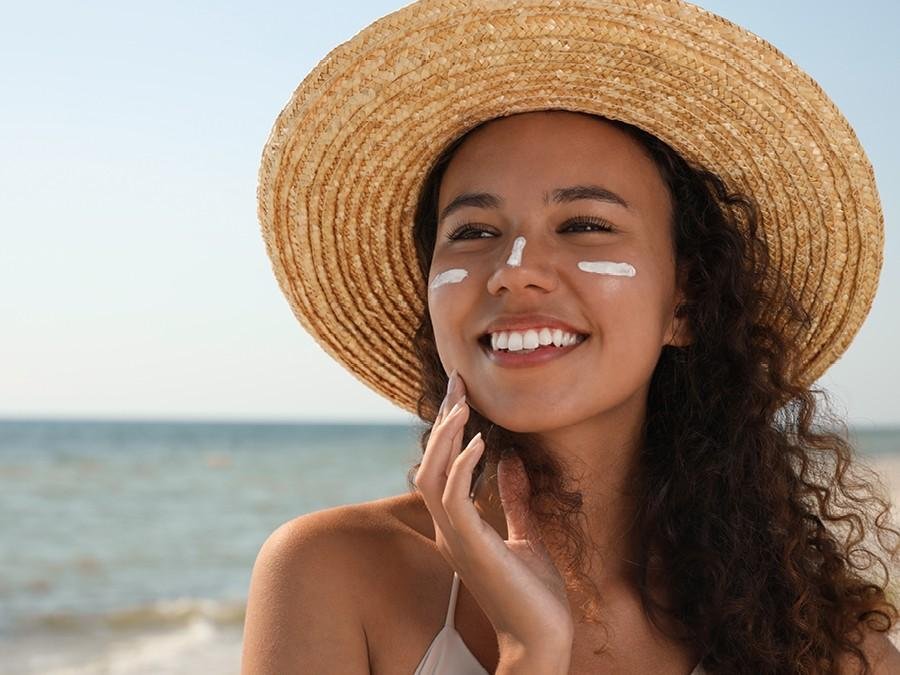
The dangers of overexposing skin to sunlight have been well documented over the last few years, prompting a rise in the use of sunscreens. And while sun protection is vital, it’s important that we balance this with sufficient sun exposure for a healthy dose of vitamin D.
What is the role of vitamin D in the body?
Although vitamin D can be supplemented and found in certain foods, sunshine is considered the best source for the body to maintain optimal health. Without sufficient vitamin D, we risk serious health consequences such as osteoporosis, muscle weakness, cancer, and depression. Here are some of the ways in which vitamin D helps the body:
- It regulates calcium and phosphorus homeostasis to maintain bone mineralisation, ensuring normal bone development;
- Vitamin D can regulate cell differentiation and growth to minimise the risk of colorectal and breast cancer;
- Observational studies show vitamin D reduces susceptibility or severity of autoimmune diseases such as diabetes, multiple sclerosis, rheumatoid arthritis, Parkinson’s Disease, and systemic lupus erythematosus; and
- Observational studies have also indicated that sufficient vitamin D decreases incidence and severity of Covid-19.
What is the role of vitamin D on the skin?
Vitamin D is not only important in the body’s internal functions, but also plays a very important role in skin. Vitamin D:
- Inhibits the development of carcinomas (lowers the risk of skin cancer);
- Regulates the production of skin lipids that form part of the skin barrier;
- Provides anti-inflammatory effects; and
- Helps to regulate the immune responses in skin.
Vitamin D’s function in the skin is highlighted by its use in the treatment of various skin conditions such as psoriasis and atopic dermatitis.
How much sun exposure do we need?
 – How far you live from the equator
– How far you live from the equator
The further you live from the equator; the less vitamin D is made in the skin. This is because the sun’s rays – particularly UVB rays – are absorbed by the ozone layer, and are less intense further away from the equator. This means spending a bit more time in the sun or possibly taking vitamin D supplements.
– Your skin colour
The skin’s colour is determined by a pigment called melanin, which helps to protect the skin from excess sunlight – like a natural sunscreen. This does mean that the darker your skin, the longer you may need to spend in the sun to get the required vitamin D dose.
– The time of day
Sunlight is most intense around the middle of the day, so less exposure time is needed to get the required vitamin D than in the morning or afternoon. Midday is generally the most efficient time to get your daily vitamin D dosage.
– The amount of exposed skin
If you’re wearing long clothing, less of your skin will be receiving sunlight, decreasing vitamin D intake. Shorts and a shirt will mean more vitamin D so less time required in the sunlight.
All factors considered, it’s generally recommended that you apply sunscreen after 10 to 30 minutes of unprotected sun exposure to avoid harmful consequences such as sunburn and other skin damage.
What’s best when it comes to sun protection?
It’s clear that sunshine provides health-enhancing vitamin D, but if you’re going to spend an extended period of time in the sun, you need to apply sun protection. Sunlight favours co-evolved microbes over pathogens, so to attain a balanced microbiome, you need some unprotected sun exposure balanced with sun protection that supports – rather than destroys – your microbiome.
Choosing a sunscreen
Many modern sunscreens contain harmful synthetic chemicals that can damage the skin. One ingredient is octocrylene, which has shown systemic accumulation in the body’s glandular regions – even months after you’ve stopped using the product. Another ingredient that is also incredibly toxic to the natural environment is oxybenzone, with just one drop killing coral in 6.5 Olympic-sized swimming pools’ worth of water – and you would use an average of 26 drops per application, which is 169 Olympic-sized swimming pools.
 Fortunately, Esse Sunscreen is completely mineral-based, using wax-coated zinc oxide to provide SPF30 protection that blocks UVA and UVB rays while the powerful antioxidants in Myrothamnus, Rooibos, and Olive Leaf extracts mop up free radicals generated by sun exposure. Other reasons Esse Sunscreen should be your first choice are that:
Fortunately, Esse Sunscreen is completely mineral-based, using wax-coated zinc oxide to provide SPF30 protection that blocks UVA and UVB rays while the powerful antioxidants in Myrothamnus, Rooibos, and Olive Leaf extracts mop up free radicals generated by sun exposure. Other reasons Esse Sunscreen should be your first choice are that:
- It contains no nanoparticles, making it safer for the skin and the microbiome;
- It’s fragrance-free and suitable for sensitive skin;
- It’s microbiome- and coral reef-friendly.
Learn more about Esse Sunscreen or find your nearest Esse stockist to get your sunscreen.
*Sources: https://www.vitamindsociety.org/
https://www.healthline.com/nutrition/vitamin-d-from-sun#dangers
https://lpi.oregonstate.edu/mic/vitamins/vitamin-D





